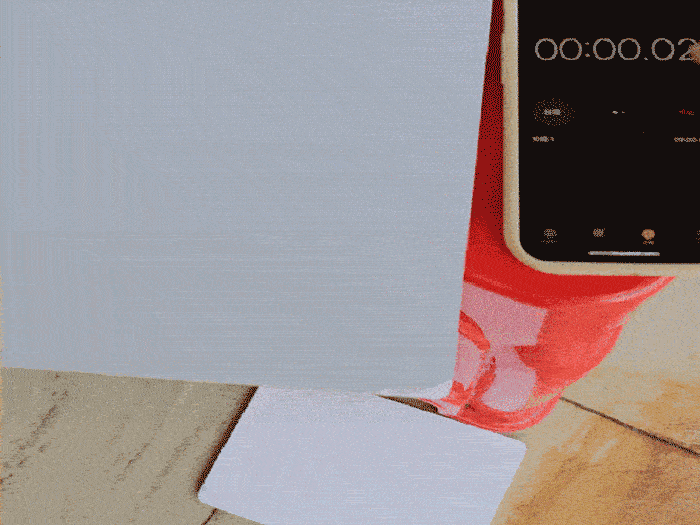How Is the Fire Performance of PVC Foam Board?
PVC foam board is a versatile material widely used in various applications, including signage, display panels, and interior cladding. Its lightweight and durable nature makes it a popular choice for both residential and commercial projects.
However, when selecting materials for construction or design, it's crucial to consider their fire performance. Understanding how PVC foam board performs in fire-related scenarios is essential for ensuring safety, meeting regulatory standards, and making informed material choices. In this article, we'll explore the fire performance of PVC foam board, its ratings, and how it contributes to safety in various applications.
1. Fire Performance of PVC Foam Board
What is Fire Performance?
Fire performance refers to how a material behaves when exposed to fire, including its ability to resist ignition, limit flame spread, and reduce smoke production. This property is crucial for ensuring safety in both residential and commercial settings. Materials with high fire performance ratings help prevent the rapid spread of flames, reduce smoke hazards, and maintain structural integrity during a fire, which is essential for protecting occupants and property.
Fire Resistance Ratings
PVC foam board is tested for various fire performance metrics, including flame spread and smoke development. These ratings are determined through standardized fire tests that evaluate how well the material resists catching fire, how quickly flames spread across its surface, and the amount of smoke produced during combustion. It's important to note that Boardway standard eco-friendly PVC foam boards are self-extinguishing once the flame source is removed, adding an extra layer of safety.
In fire tests, PVC foam board performs adequately, though its exact ratings can vary based on specific formulations and thicknesses. It is essential to choose PVC foam board products that comply with relevant safety standards to ensure effective fire performance.
Fire Retardant Additives
To enhance the fire performance of PVC foam board, manufacturers often incorporate fire retardant additives. These additives improve the material’s resistance to ignition and slow down the rate of flame spread. At Boardway, our flame-retardant-grade PVC foam boards are engineered to meet the stringent ASTM E84-18b standard, achieving a Class A rating. This means our boards have a Flame-Spread Index (FSI) between 0-25 and a Smoke-Developed Index (SDI) between 0-450.
By integrating these fire retardant additives, Boardway ensures that its PVC foam board products not only meet but exceed fire safety standards, providing peace of mind and reliability for various applications.
2. Applications and Compliance
Indoor vs. Outdoor Use
PVC foam board's fire performance can vary depending on whether it is used indoors or outdoors. Understanding these differences is crucial for selecting the appropriate material for your specific needs.
Indoor Use: PVC foam board is often used in indoor environments such as office spaces, retail stores, and exhibition halls. In these settings, the board's fire performance is generally adequate for most applications. Indoor use typically requires compliance with lower fire resistance standards compared to outdoor settings. The material's moderate flame spread and smoke development ratings are usually sufficient for indoor applications where fire safety is a significant concern.
Outdoor Use: When used outdoors, PVC foam board must withstand more severe conditions, including exposure to direct sunlight, temperature fluctuations, and potential impact from environmental elements. For outdoor applications, it's essential to ensure that the PVC foam board meets higher fire resistance standards. The material's fire retardant properties play a crucial role in preventing rapid ignition and ensuring that it remains stable and effective even under harsher conditions.
Regulatory Standards
To ensure safety and compliance, PVC foam board must adhere to various building codes and fire safety regulations. These standards are designed to provide guidelines for materials used in construction and design to ensure they meet safety requirements.
Building Codes and Fire Safety Regulations: PVC foam board is subject to regulations that specify minimum fire resistance ratings for materials used in construction. These codes often require testing and certification to ensure the material meets the required performance criteria. Compliance with these regulations helps prevent fire hazards and ensures that the material contributes to overall building safety.
Certifications and Standards: Several standards and certifications are relevant to the fire performance of PVC foam board, including:
By adhering to these regulatory standards and obtaining relevant certifications, Boardway ensures that its PVC foam board products provide reliable fire performance and contribute to the safety and compliance of your projects.
3. Improving Fire Safety
Installation Tips
Proper installation is crucial for maximizing the fire safety of PVC foam board. Follow these best practices to ensure optimal performance:
1. Adhere to Local Building Codes: Always comply with local building codes and fire safety regulations when installing PVC foam board. These codes provide guidelines for fire-resistant materials and their proper installation.
2. Use Approved Adhesives: When bonding PVC foam board to surfaces, use adhesives that are specifically approved for use with fire-resistant materials. Ensure that the adhesive itself meets fire safety standards.
3. Proper Ventilation: Ensure that the installation area is well-ventilated to prevent the accumulation of fumes from adhesives or other materials that could impact fire safety.
4. Seal Joints and Edges: Seal all joints and edges of the PVC foam board with fire-resistant sealants. This helps to prevent the spread of flames and smoke through gaps and seams.
5. Install with Adequate Spacing: Maintain appropriate spacing between PVC foam boards and other combustible materials. Proper spacing reduces the risk of fire spreading and ensures that the material performs effectively in case of a fire.
Maintenance and Care
Maintaining the fire safety of PVC foam board involves regular inspections and proper care. Follow these guidelines to ensure long-term performance:
1. Regular Inspections: Periodically check the condition of the PVC foam board for any signs of damage or deterioration. Address any issues promptly to prevent compromising fire safety.
2. Clean with Non-Abrasive Materials: Use non-abrasive cleaning agents and tools to clean the surface of the PVC foam board. Abrasive cleaners or tools can damage the board and potentially affect its fire performance.
3. Repair Damage Promptly: If the PVC foam board sustains damage, such as cracks or holes, repair it immediately using appropriate materials. Damaged boards can compromise fire safety and should be addressed as soon as possible.
4. Avoid Exposure to Extreme Conditions: Protect PVC foam board from extreme temperatures, direct sunlight, and chemical exposure, which can degrade its fire performance. Ensure that the material is used within its recommended temperature and environmental limits.
5. Follow Manufacturer Guidelines: Always follow the manufacturer's guidelines for maintenance and care to ensure that the PVC foam board retains its fire-resistant properties throughout its lifespan.
By adhering to these installation tips and maintenance practices, you can enhance the fire safety of PVC foam board and ensure that it performs effectively in protecting against fire hazards.
In summary, understanding the fire performance of PVC foam board is crucial for ensuring safety in various applications. PVC foam board generally offers moderate flame spread resistance and low to moderate smoke development, making it suitable for a range of indoor and outdoor uses. The incorporation of fire retardant additives can further enhance its fire resistance, contributing to its effectiveness in fire safety.
At Boardway, we are committed to providing high-quality PVC foam board that meets stringent safety standards. With 18 years of experience as a leading Chinese manufacturer, we ensure that our products not only deliver exceptional performance but also adhere to rigorous fire safety regulations. For any projects requiring reliable fire performance, Boardway's PVC foam board is a trusted choice for quality and safety.












